I was doing backstitch, and suddenly, Holbein stitch came up. At first, I thought the Holbein stitch was also a kind of backstitch. But that’s not the case. There are differences between holbein stitch vs backstitch. How different are they?
Well, the key difference between Holbein stitch and backstitch is-
Holbein Vs Backstitch
The main difference between Holbein and backstitch is the stitching technique. Holbein stitch creates a reversible, double-sided outline, while backstitch forms a single-sided, stronger outline commonly used for detailing.
Sounds interesting, right? Ok, then let’s talk about them in detail.
Main Facts:
- Holbein stitch is double-sided, creating a smooth, continuous line on both sides of the fabric. You can find Holbein stitch embroidery on embroidery patterns.
- Backstitch is a Single-sided, producing a solid line with slight breaks between stitches.
- Choose Holbein Stitch if you need a clean, reversible line for fine details.
- Choose Backstitch if you need strong, quick outlines.
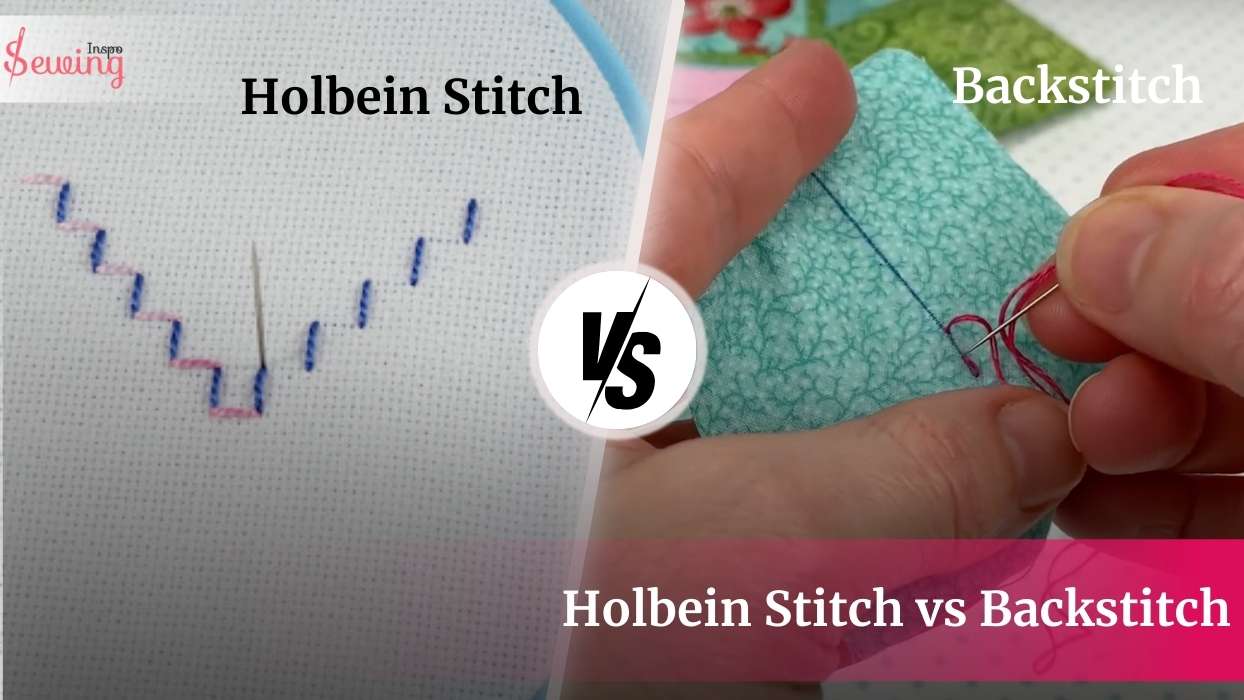
Table of Contents
What Is Holbein Stitch?
Holbein stitch is actually a running stitch but worked twice; one time, the stitch goes straight and 2nd time, the stitch goes backwards. Holbein stitch also called double running stitch.
It looks like a continuous line formed by stitching a running stitch in one direction, then going back over the same line in the opposite direction to fill in the gaps. This is why it’s called holbein stitch.
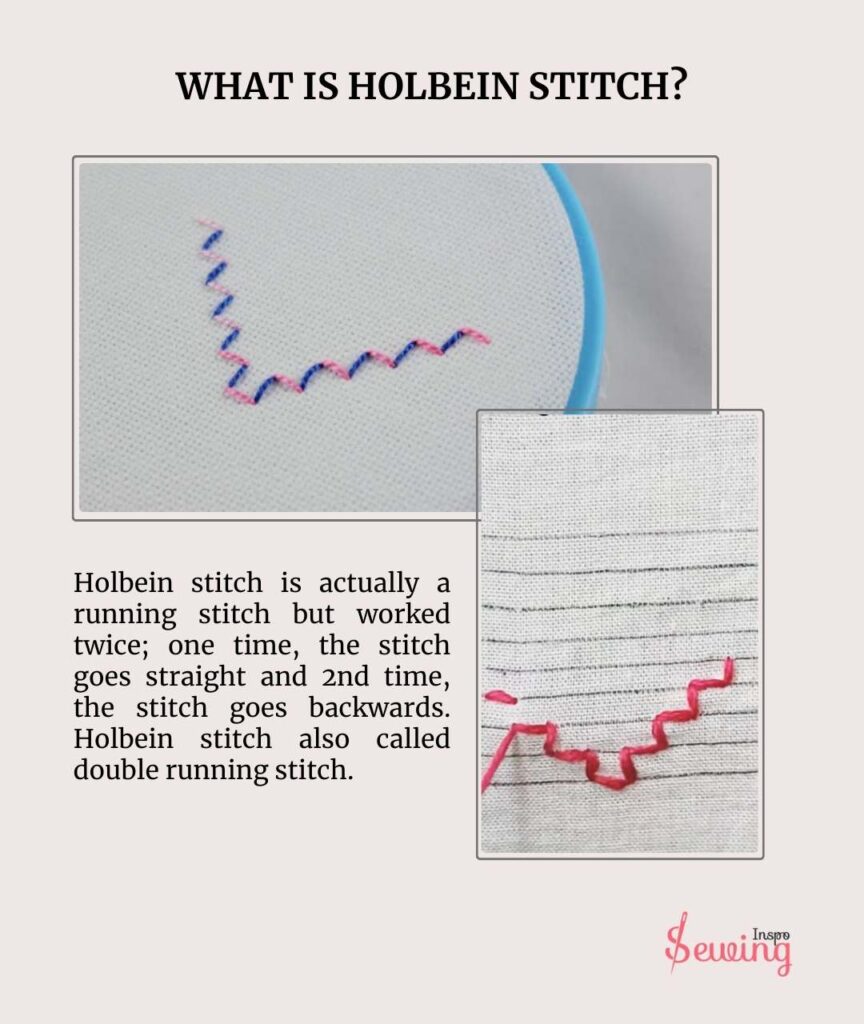
This stitch is commonly used in Blackwork and Assisi embroidery. It’s named after Hans Holbein the Younger (1497-1543), a 16th-century portrait artist famous for his paintings of Henry VIII and his children, who are often shown wearing clothing adorned with black embroidery.
Holbein stitch is an interesting stitch. So I also make holbein stitch. And trust me it’s interesting but easy.
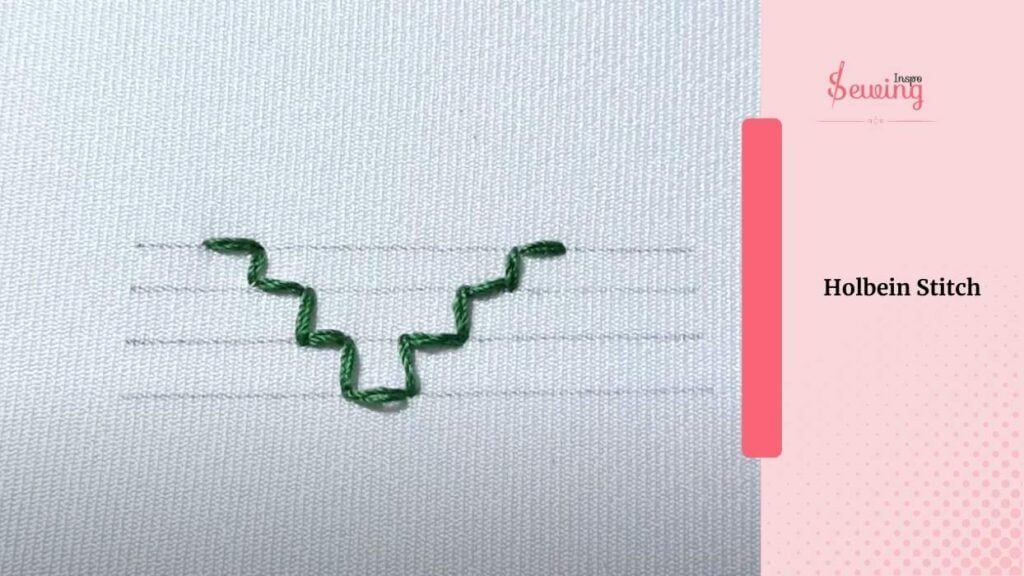
Holbein Stitch Patterns
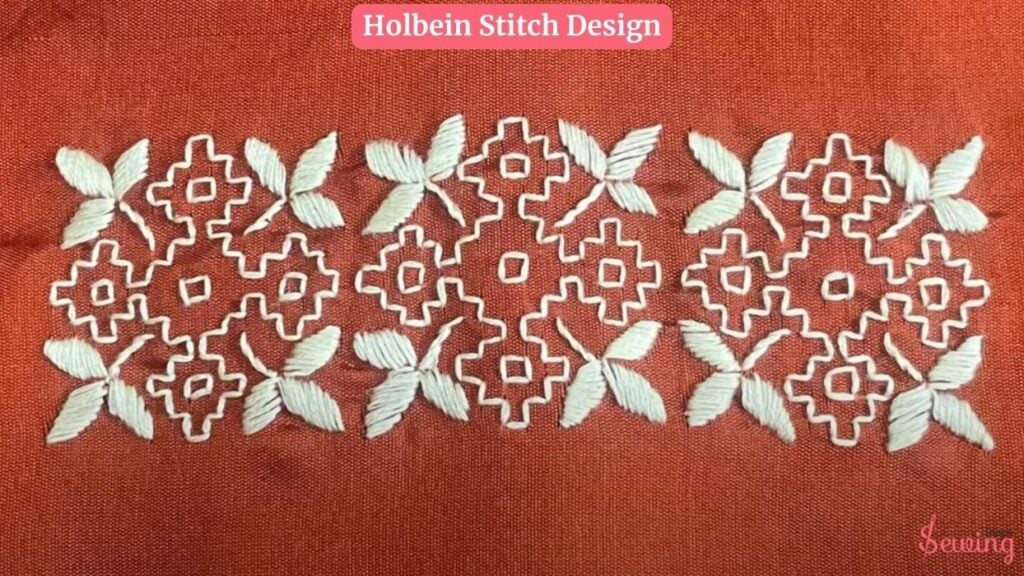
I find Holbein stitch so interesting that i even make few design with it. Here is how the Holbein stitch design looks,
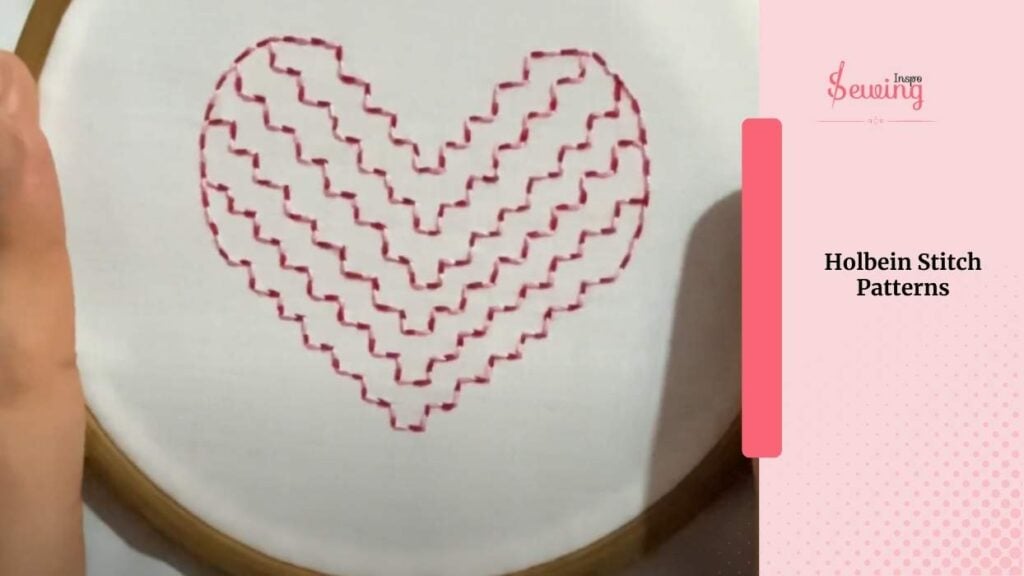

Holbein Stitch Embroidery
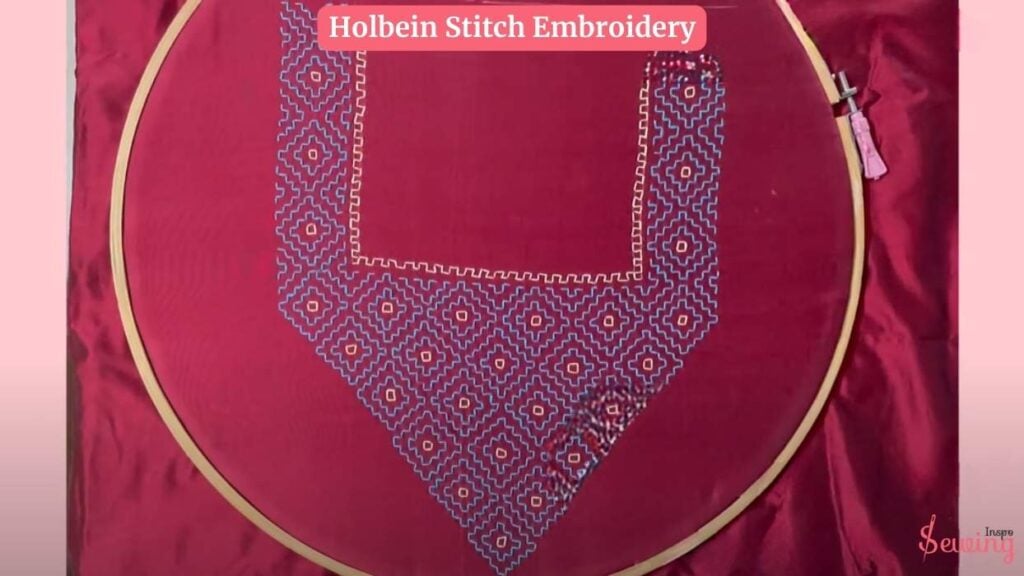
After seeing the pattern, you must be curious how it looks on embroidery, right? Well, no worries, I’ll cut down on your curiosity, too.
Holbein Stitch Tutorial
What you wanna do Holbein stitch embroidery? That’s great. But i know you must be kinda confused right now. So here watch this video tutorial. I bet you can do the stitches after seeing it.
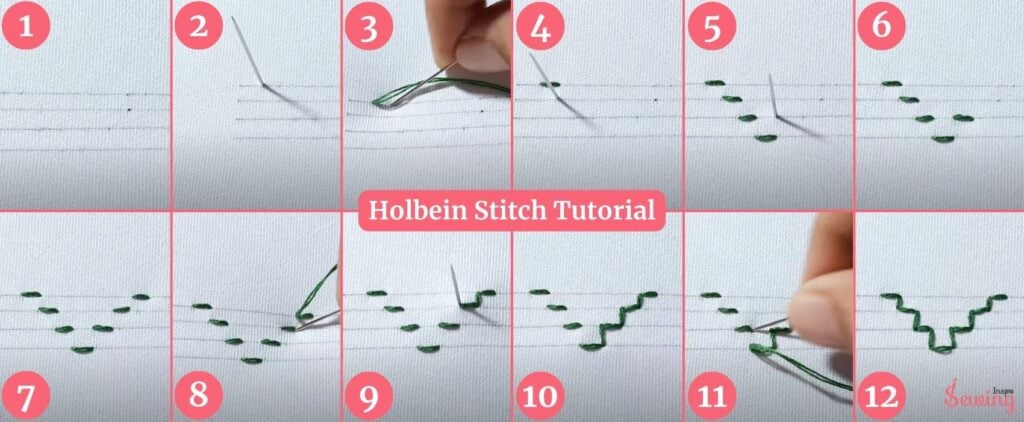
Holbein Stitch | Hand Embroidery Design
Holbein Stitch Vs Backstitch Key Differences!
The difference between Holbein stitch vs backstitch is their look. Holbein stitch is a zigzag running stitch pattern, and the backstitch is a straight line stitch. If you saw backstitch images, then you would know.
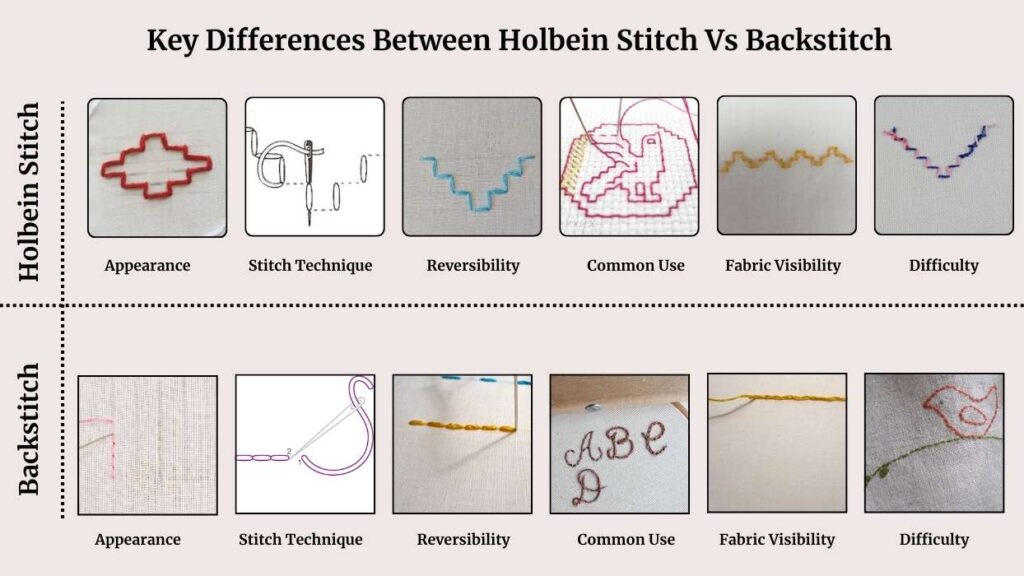
But of course, there are more differences rather than that.
| Feature | Holbein Stitch | Backstitch |
| Appearance | Double-sided creates a smooth, continuous line | Single-sided, creates a solid line with a slight break between stitches |
| Stitch Technique | Worked twice: first in one direction, then back over in the opposite direction | Worked in one direction, with each stitch connecting to the previous one |
| Reversibility | Reversible, looks the same on both sides of the fabric | Not reversible, visible only on one side of the fabric |
| Common Use | Blackwork, Assisi embroidery, fine line work | Outline work, lettering, general embroidery |
| Fabric Visibility | Both sides are neat and even | The backside is less tidy, with visible stitches |
| Difficulty | Slightly more complex due to the back-and-forth stitching | Simpler, as it’s worked in a single direction |
If you wanna read more comparisons like this, then read our article lock stitch vs backstitch.
How To Know Which Is Best For Your Stitch?
Well, the choice depends on you. If you need a clean, reversible line that looks the same on both sides of the fabric, the Holbein stitch is your best bet.
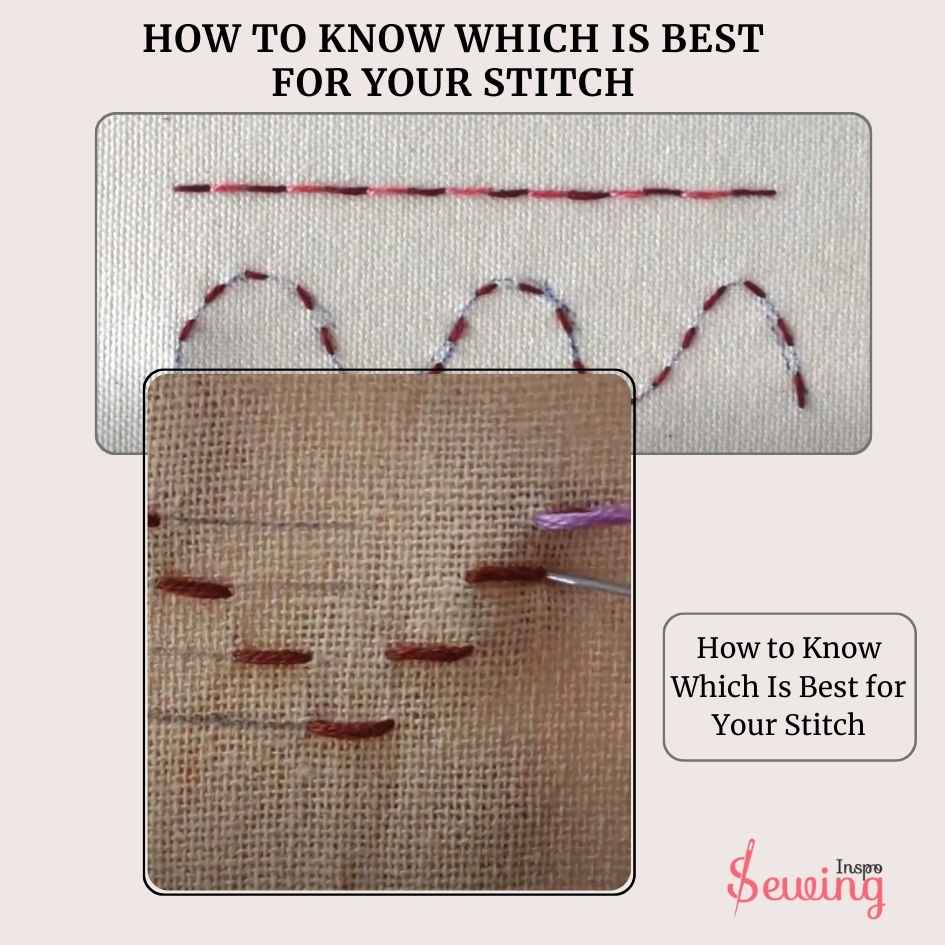
On the other hand,
if you’re after strong, defined outlines that don’t need to be reversible, the backstitch is simpler and quicker. It’s perfect for outlining shapes or adding fine details to projects where only one side of the fabric shows.
So, if you want something more detailed and reversible, go for the Holbein stitch; if you need fast and clear outlines, backstitch is the way to go.
Just like you would know backstitch is better between front and back stitch.
Holbein Stitch Vs Backstitch How To Choose?
Choosing between the Holbein Stitch and Backstitch really depends on your project’s needs and the look you’re going for. Holbein Stitch is also known as a double-running stitch. It is perfect if you want a design that’s reversible and neat on both sides—think table linens or scarves. However, it takes little practice.
On the other hand,
Backstitch is quick, easy, and great for strong seams or bold outlines. It’s a go-to for beginners or when you want to finish a project quickly. While the front of a Backstitch looks solid, the back will show small stitches. That’s why it’s called the strongest stitch by hand. With the right threads for back stitch you can create any look.
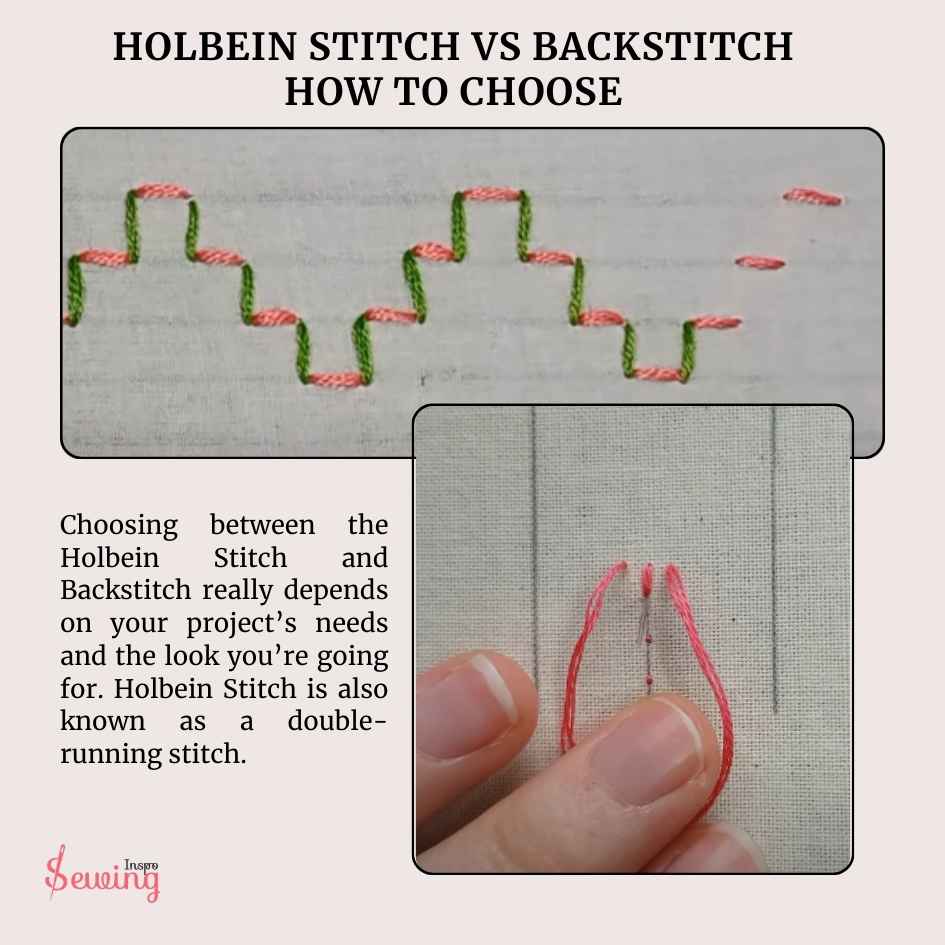
So, basically,
Holbein Stitch is worth it if you’re after clean, flowing lines and have time to spare. But if strength or speed is your priority, Backstitch is the way to go.
Why not test both on a scrap piece of fabric to see which feels right for your project? And share your sewing inspiration with us.
Frequently Asked Questions (Faq’s)
Is Holbein Stitch More Difficult Than Backstitch?
Yes, the Holbein stitch is more challenging than the backstitch. It involves stitching in one direction and then going back over the same line in the opposite direction to fill in the gaps, requiring more precision and attention to detail.
When Should I Use Backstitch Instead Of Holbein Stitch?
Use backstitch when you need a strong, clear outline but don’t need it to be reversible. It’s quicker and easier to execute than the Holbein stitch, perfect for simpler projects or when you only need one side of the fabric to show.
Can I Use The Holbein Stitch And Backstitch Together In The Same Project?
Yes, you can use both stitches together. For example, use the Holbein stitch for areas that need to be reversible or for finer, detailed lines while using backstitch for quick outlines or stronger, more defined edges.
Final thought
So yes, that’s the difference between holbein stitch vs backstitch. Which one is your favourite so far? And which one you tried? Feel free to share with us.
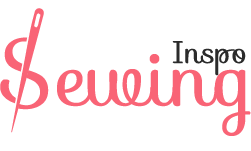
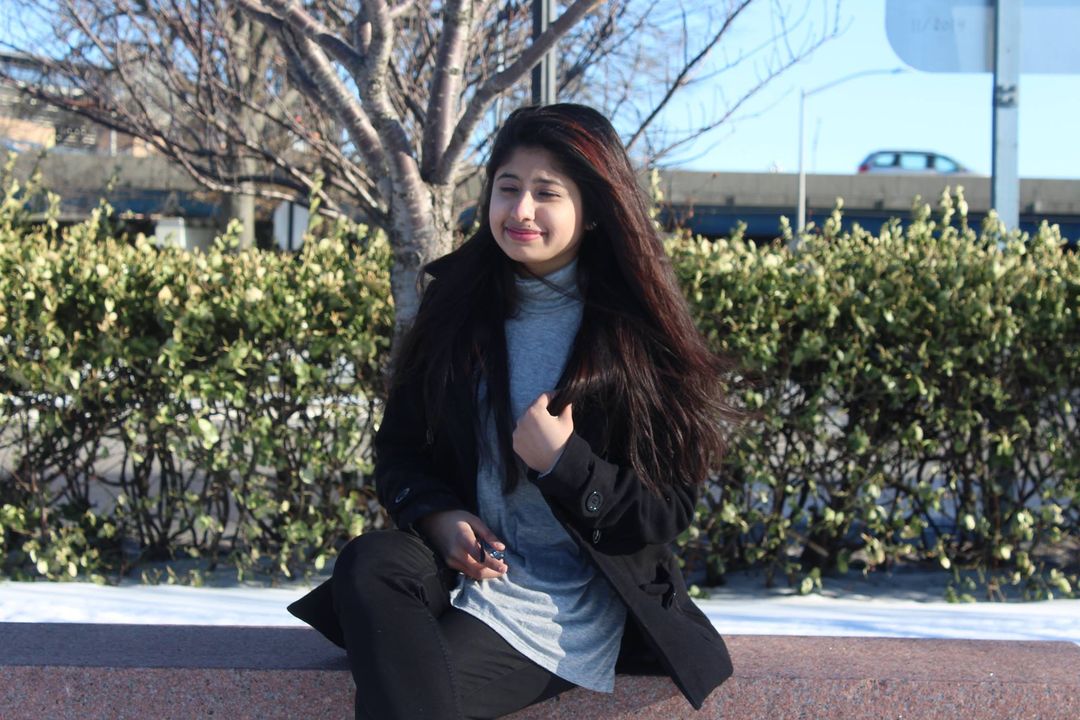
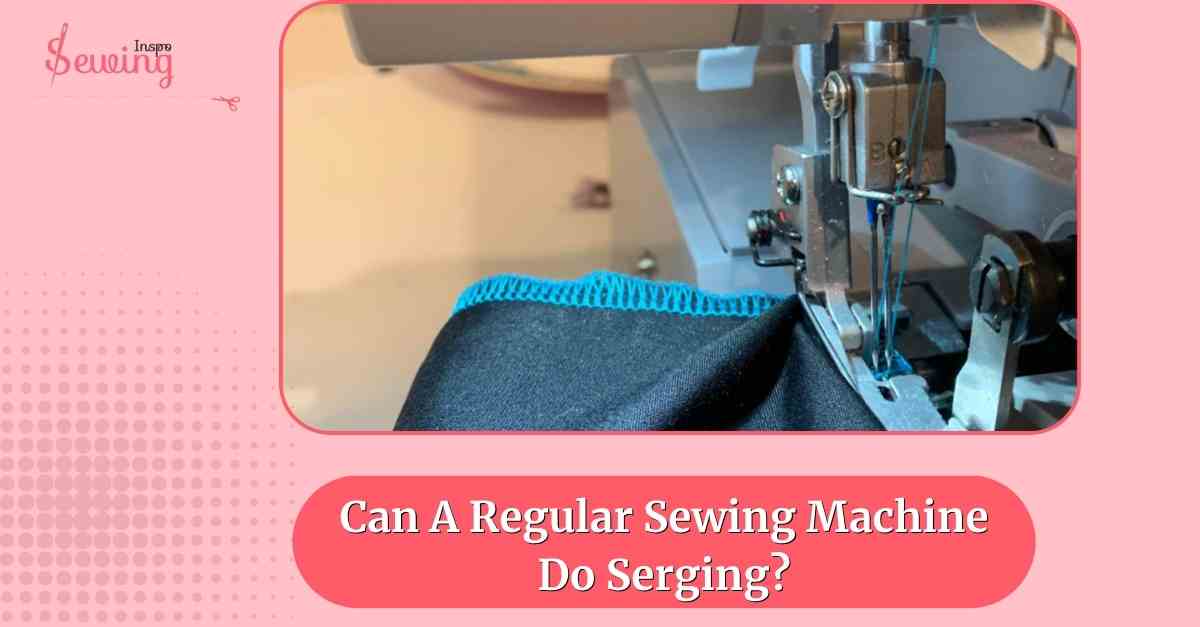
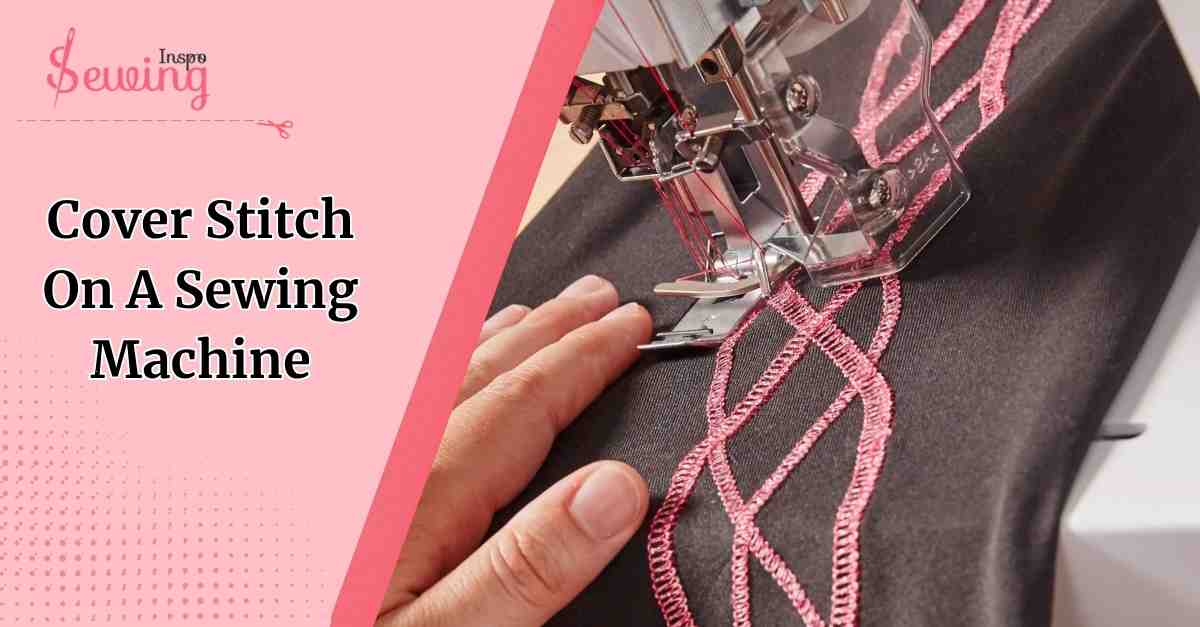
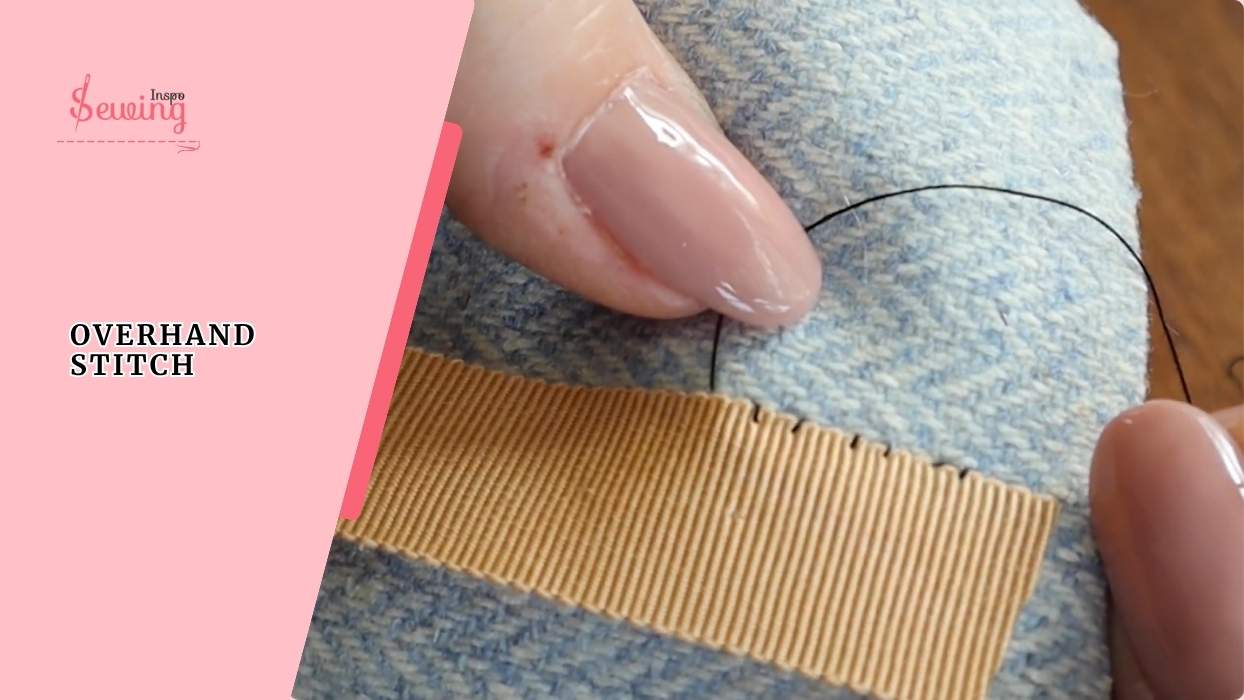
Leave a Reply